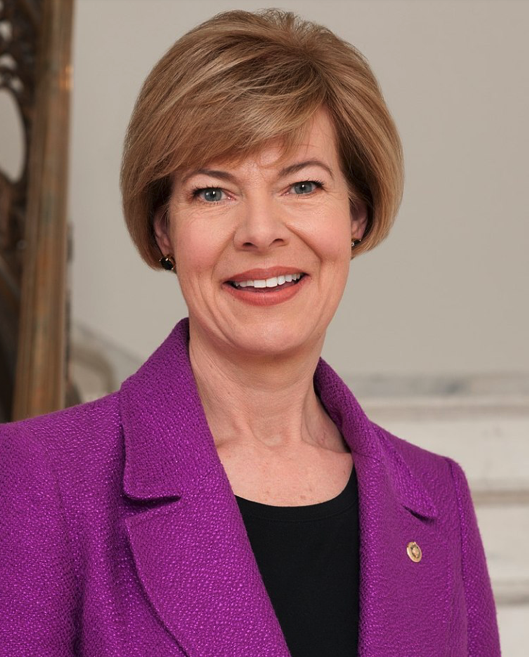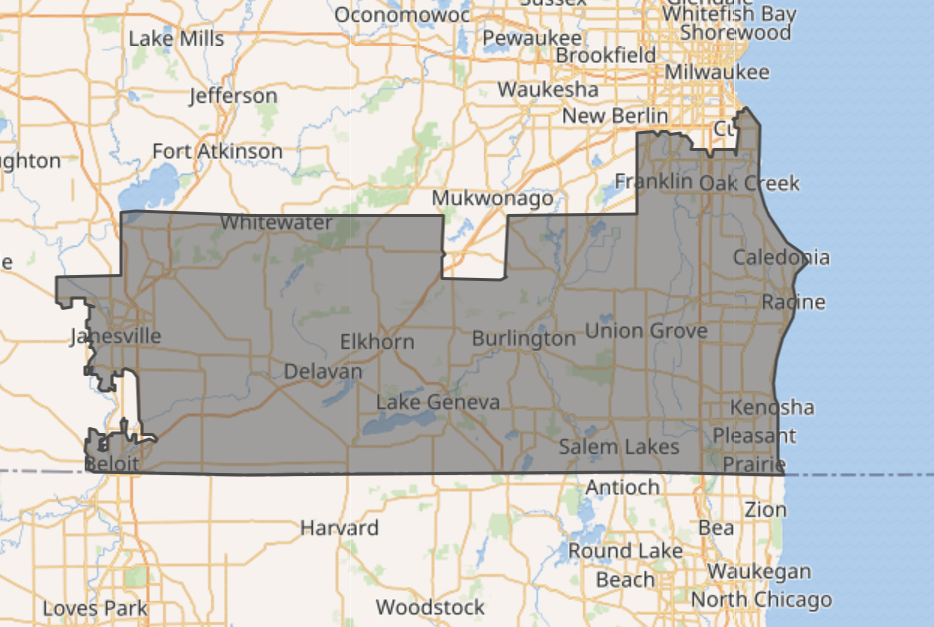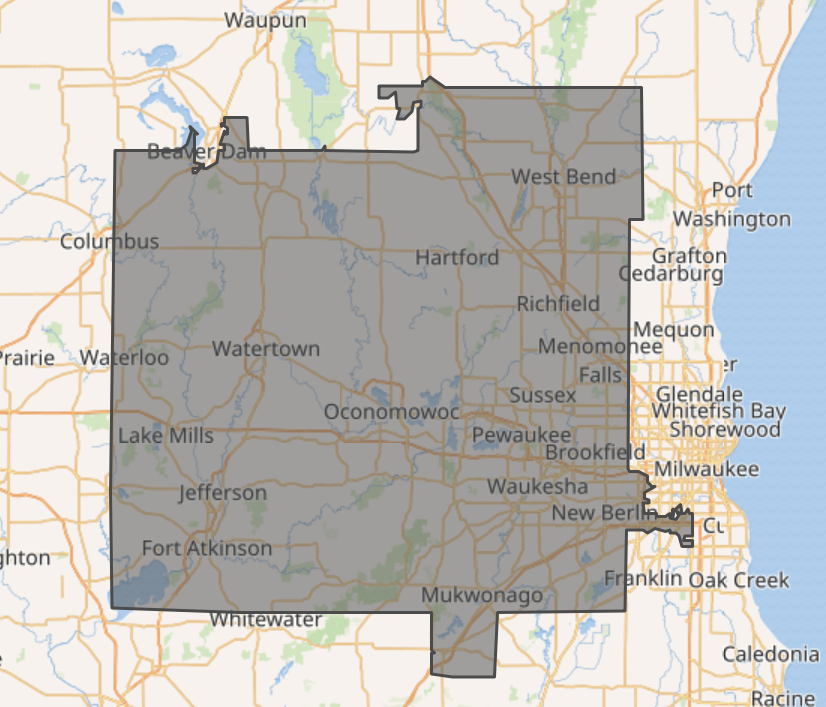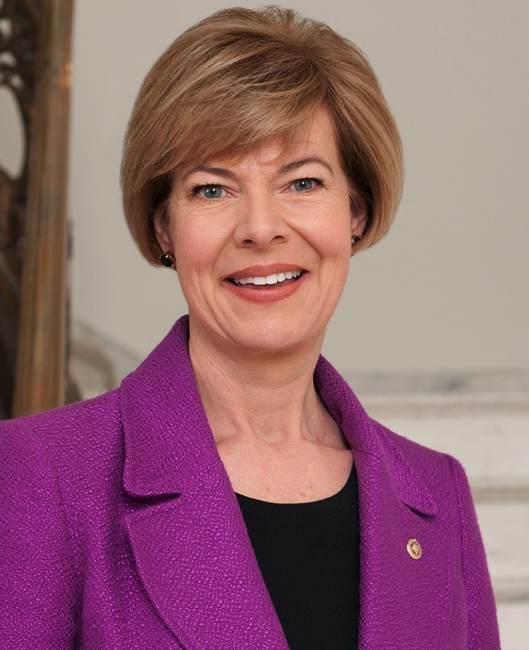Editor’s note: The following story has been shared for publication by The Badger Project, which, according to its website, is a nonpartisan, citizen-supported journalism nonprofit in Wisconsin. A link to the publication is here: https://thebadgerproject.org.
Tammy Baldwin, a Democrat, is one of two U.S. senators representing the state of Wisconsin. The other is Ron Johnson, a Republican. Baldwin’s seat will come due for reelection in November, 2024.
In addition, all eight Wisconsin congressional district seats are up for election in November 2024.
U.S. Rep. Bryan Steil, Janesville-R, represents Wisconsin’s first Congressional District in the U.S. House of Representatives, in which the city of Whitewater resides.
U.S. Rep. Scott Fitzgerald, Clyman-R, although not mentioned in this story, represents Wisconsin’s Fifth Congressional District in the U.S. House of Representatives, in which the city of Fort Atkinson resides.
By Christina Lieffring/The Badger Project
The pool of Republican candidates to run against U.S. Sen. Tammy Baldwin is expected to fill out this summer, but so far some of the most well-known possibilities have said they’re not interested or aren’t committing to the race.
Who the Republican party will run against Baldwin is one of the “biggest unknowns” going into the 2024 election, said Barry Burden, University of Wisconsin-Madison political science professor and director of the Elections Research Center, but “the field should become much clearer this summer as several potential candidates make up their minds about whether they will run.”
Burden noted that congressional representatives have an inherent advantage going into a statewide election.
“Each of them already represents an eighth of the state and could convert their House campaign funds to Senate campaign funds without much difficulty,” Burden said.
U.S. Rep. Bryan Steil, a Republican from the Janesville area, is coming off an aggressive first quarter of fundraising this year, which raised speculation he could be weighing a run for the Senate. Steil raised nearly $1 million, and he has about $2.2 million on hand.
However, Steil’s campaign was clear.
“Congressman Steil is focused on his work in the House limiting spending and saving taxpayers money,” campaign spokesman James Langnes wrote in an email. “He plans on running for reelection to the House in 2024. He is not running for the Senate.”
U.S. Rep. Mike Gallagher, a Republican from the Green Bay area, has also come up as a potential contender, though he only raised about $500,000 through Mike Gallagher for Wisconsin, Inc last quarter.
But Gallagher has been evasive on whether he’ll run. Jordan Dunn, Gallagher’s communications director, referred to Gallagher’s comments on WISN-TV (“I have my hands full with this committee [on China]… I think it’s my highest and best use right now in the Congress, so I’m not thinking about 2024”) and to the Milwaukee Journal Sentinel (“Kevin Seifert, [Gallagher’s campaign] advisor, said “He is focused on doing his job in the House and does not have any announcement at this time.”)
U.S. Rep. Tom Tiffany, a Republican from northern Wisconsin, has said he is weighing running and confirmed his team purchased ThomasTiffanyforSenate.com and TomTiffany4Senate.com ahead of a potential run. But he raised only $37,194 last quarter. Tiffany also has said he think Gallagher should run.
Election ‘cybersquatting’
The website names BryanSteilforSenate.com and SteilforSenate.com were purchased in December, according to ICANN records, but not by Steil’s campaign, Lagnes said. The website name GallagherforSenate.com was purchased in August and MikeGallagherforSenate.com in December. Dunn did not respond to questions about the website names or whether Steil saying he would not run for U.S. Senate would affect Gallagher’s decision.
Ryan Weichelt, geography professor at UW-Eau Claire and an expert in redistricting, said the websites could have been purchased for what’s called “cybersquatting,” a practice that originated with businesses trying to redirect people from one company toward theirs. Nowadays, Weichelt said, it could be used to create fake websites to collect information or donations, run parody websites, make it more difficult for candidates to purchase the domains most conducive to search engines, or spread misinformation. Since the websites are not currently active, it’s hard to tell.
“I believe It is highly likely that somebody not connected with the [campaigns] bought these domain names,” Weichelt said. “For what purpose, I am not sure, but most likely to use it to be confusing to the public about the candidate or make it difficult for the [campaigns] to create a domain name that is easily searchable.”
When Mandela Barnes challenged U.S. Sen. Ron Johnson for his seat last year, antagonists purchased domain names and created negative websites for each candidate.
Safe seats and another possible round of redistricting
While Congressional representatives have an advantage, it is still a big risk for any of them to take the leap for statewide election, Burden said.
“[Congressional representatives] would have to make a difficult decision at some point about whether to abandon their House seats to pursue the Senate bid or to stick with the safer route of running for reelection in their districts,” Burden said.
But some districts are safer than others. One factor that could play into Steil’s or Gallagher’s calculations is Janet Protasiewicz’s election to the Wisconsin Supreme Court. Under a left-leaning court, Wisconsin’s heavily gerrymandered maps that favor Republicans could be redrawn. Weichelt said it’s unlikely such a process could happen quickly enough to affect 2024, but could factor into how safe it is for congressional representatives to stay where they are.
Weichelt said any “major shifts” would probably be in Steil’s district. Democratic U.S. Rep. Mark Pocan’s deep blue district that includes Madison and Dane County is “an obvious packing situation” as Republicans who drew the maps jammed as many Democrats into those areas as possible. Future maps could shift some of those left-leaning voters into Steil’s more right-leaning district. There’s also the question of whether more of Milwaukee’s suburbs, which are gradually turning purple, could be added to the first district.
“Would it be enough to push Steil out? I cannot say at this point as there are so many unknowns, but it is clear Republican votes continue to slowly erode around the [Milwaukee] Suburbs,” Weichelt said. “I would think if districts are dramatically redrawn and it looks poor for Steil, it would make his decision to run for the Senate that much easier.”
Gallagher’s district is relatively safe, even with potential redistricting, Weichelt said.
Another factor will be the 2024 Republican Presidential nominee. Both Gallagher and Steil have a complicated track record with former President Donald Trump.
“Gallagher was rather outspoken against Trump, especially regarding Jan. 6. Steil has been pivoting all around Trump. He will have to walk a very tight path,” Weichelt said. “At this point, I just don’t see Tammy Baldwin losing to any of these GOP candidates. Trump has so much baggage and it will be impossible for candidates to avoid all of it.”
Meanwhile, Baldwin, in addition to her advantage as an incumbent, has proven to be a strong candidate in multiple elections, regardless of the popularity of national Democrats.
“Baldwin is very popular, even with a weak Joe Biden,” Weichelt said.
Other potential candidates
Burden notes that other corporate or political candidates could throw their hats into the race.
Former Gov. Scott Walker told the Milwaukee Journal Sentinel in March he wouldn’t run against Baldwin because he “would be bored as a senator,” but his former Lt. Gov. Rebecca Kleefisch, who lost in the gubernatorial primary to Tim Michels, could make a move.
Milwaukee businessman Scott Mayer has expressed interest, as have Eric Hovde and Kevin Nicholson, who have run in Republican statewide primaries and “have the potential for significant fundraising, either from their own coffers or from supportive megadonors,” Burden said.
“There may be other candidates who are not yet known to the public,” Burden added. “Although he had run for office once before, Tim Michels was not highly visible before he launched his gubernatorial primary campaign in April of the election year. Ron Johnson was even less familiar to voters when he jumped into the Senate race against incumbent Russ Feingold in the spring of 2010.”

Wisconsin U.S. Sen. Tammy Baldwin, according to information found on Ballotpedia.com, will end her term in office on Jan. 3, 2025. She has declared her candidacy for the 2024 election. The fall general election in Wisconsin, during which Baldwin’s seat will be decided, will be held Tuesday, Nov. 5.
In addition, all eight of Wisconsin’s U.S. Congressional District seats will come due for election on Nov. 5, 2024. A list, including each district’s map and representative, is here: https://en.wikipedia.org/wiki/Wisconsin%27s_congressional_districts.

A map shows Wisconsin’s First Congressional District in the U.S. House of Representatives which is represented by Bryan Steil, and includes the city of Whitewater.

A map shows Wisconsin’s Fifth Congressional District in the U.S. House of Representatives which is represented by Scott Fitzgerald, and includes the city of Fort Atkinson.
This post has already been read 1868 times!
